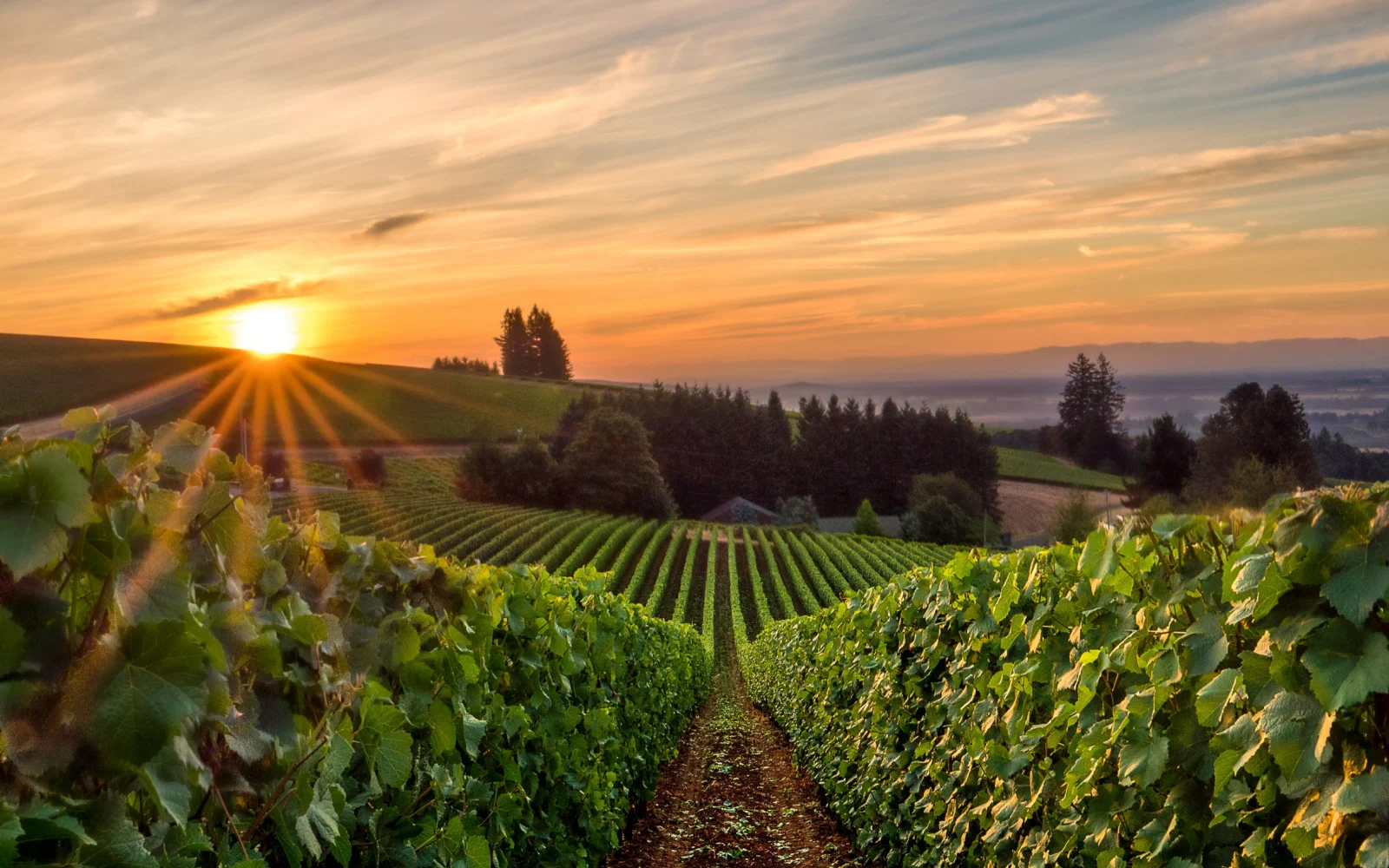What's the best time to visit Willamette Valley?
The best time to visit Willamette Valley is from April to June, offering a blend of cultural events and pleasant weather. April’s highlight is the Wooden Shoe Tulip Festival, while May celebrates Oregon’s wine month with the start of the South Willamette Valley Food Trail.
June’s warmer weather, ideal for outdoor activities, caps off the season, making these months perfect for experiencing the valley’s natural and cultural richness.
A 150-mile-long valley in Oregon, the Willamette Valley is worth a visit at any time of the year. From wine-tasting events, horseback riding, and dining at a farm to enjoying stunning valley views, cycling, and going berry picking — there’s always something travelers can enjoy in this laid-back yet vibrant region.
Although a year-round destination, chances are you’re wondering when the best time to visit Willamette Valley is so that you can take advantage of all the valley has to offer.
Whether you’re looking for the best time to visit local farms, engage in outdoor activities, have a walk in the vineyards, or stick to a budget, we have you covered.
The Overall Best Time to Visit Willamette Valley
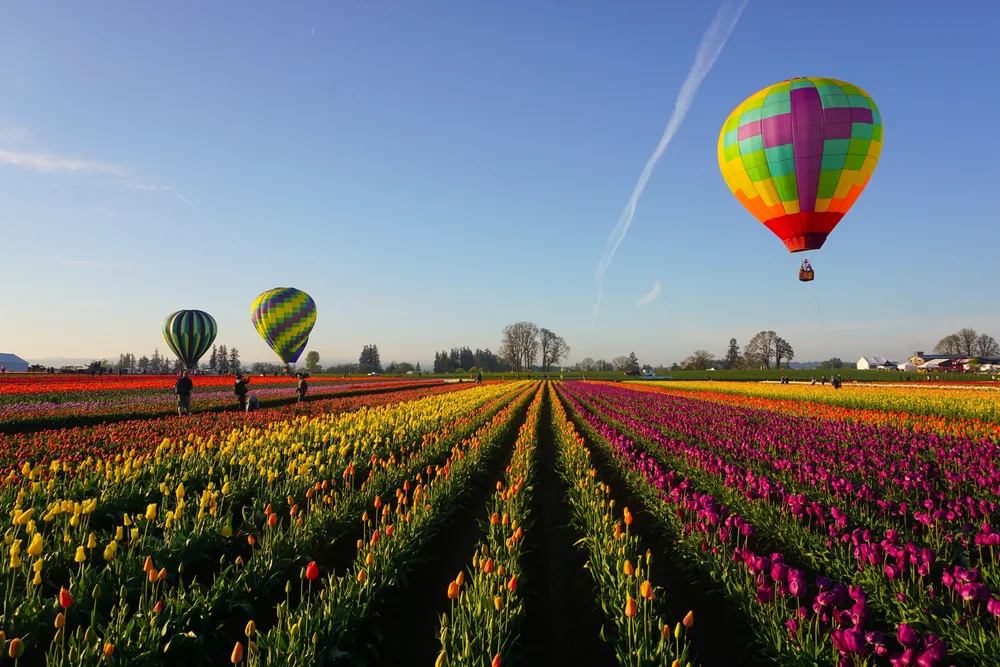
Dene’ Miles/Shutterstock
The best time to visit Willamette Valley is any time from April through June, also referred to as the Willamette in Bloom period. In April, the temperatures are between 59°F and 41°F. Humidity is still high, and on average, there are 12 rainy days. May temperatures range between 66°F and 47°F.
The month commonly has nine rainy days and around 69% humidity. June visitors should be ready for temperatures fluctuating between 73°F and 52°F.
June sees similar humidity as May but with fewer rainy days. April is a great time to attend the Wooden Shoe Tulip Festival. With a plethora of blooming tulips and a playful atmosphere, the festival is described as one of the must-see spring attractions in the area.
Moreover, nature lovers can enjoy newly blossomed trees and flowers along the roadside and inhale the fresh spring air. The weather allows travelers to combine various outdoor activities with museum tours and wine tasting.
Cycling is a great option for biking enthusiasts too. While the spring season is great all throughout, going in May is absolutely superb, as it’s Oregon’s official wine month!
May also marks the beginning of the South Willamette Valley Food Trail, so make sure to take a farm tour, try out interesting beverages, or go to some food tastings.
In addition, this is the perfect time to spice up a family holiday by taking your children to see calves, chicks, ducklings, and lambs on a nearby farm.
Cheapest Time to Visit Willamette Valley
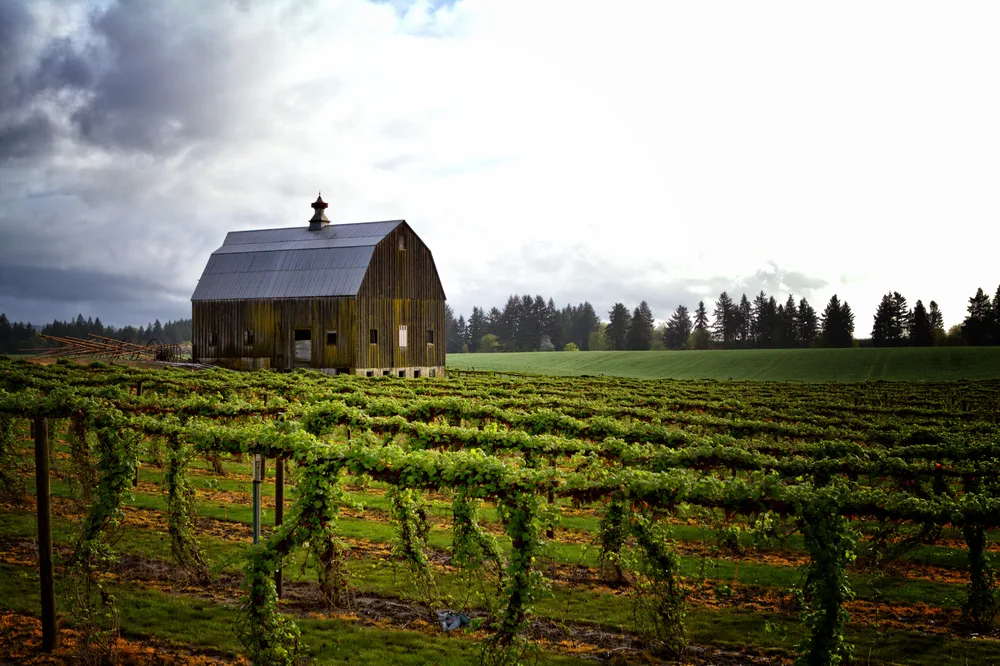
KennStilger47/Shutterstock
The cheapest time to visit Willamette Valley in its Harvest season, in September or October. Tourism is the slowest these two months, and hotels are usually reasonably priced.
In September, the temperatures vary between 76°F and 53°F. Rain is uncommon (more or less four days in the entire month), and humidity is around 61%.
October sees temperatures ranging between 63°F and 46°F. The number of rainy days increases, though, to around 10 days per month, as well as the humidity (76%).
That said, rain doesn’t begin till later in the season, but make sure to pack accordingly and dress in layers. Also, regardless of how chilly or rainy it gets, you can always end the day with a glass of Pinot Noir and a stunning view of the valley.
If wine sampling isn’t your thing, you can always add a Bavarian touch to your journey and opt for an Oktoberfest celebration in the region instead.
Being the largest folk festival in the Northwest, Mt Angel Oktoberfest provides guests with fun, a nice selection of beers and local ciders, along with plenty of sauerkraut and sausage. Most venues at the festival offer free admission, apart from three premium ones, such as Weingarten, Biergarten, and Alphinegarten.
Least Busy Time to Visit Willamette Valley
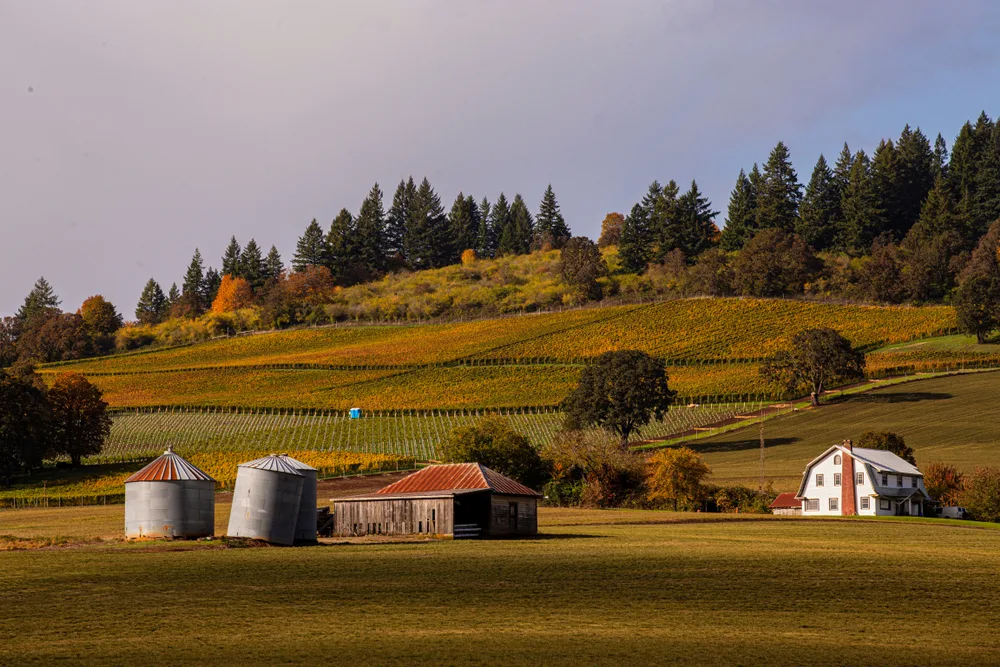
KennStilger47/Shutterstock
The least busy time to visit Willamette Valley is either January through March, also known as the Cellar season, or in November and December, often referred to as the Giving season. Winters in the valley are slow, foggy, and misty.
In January, the Willamette Valley temperatures range between 47°F and 34.9°F. It’s also one of the months with the most humidity (84%) and 13 rainy days.
February temperatures are between 49.9°F and 35.2°F. Humidity is still high, and there are around 11 days with rainfall. In March, the weather starts getting a bit better, with temperatures fluctuating between 54.6°F and 38.1°F. However, humidity and rainfall still dominate the month.
Visiting the valley in the Cellar season helps travelers prepare for a dynamic summer, whereas visiting in the Giving season allows them to embrace the upcoming fast-paced spring.
These two periods see less crowded tasting rooms and offer visitors an intimate wine-sampling vibe. Perfect for travelers who wish to explore the valley in solitude!
That said, note that wine-sampling hours may be somewhat reduced, and it’s the vineyard owners who may typically fill your glasses.
However, winter is the perfect time to sit near a flickering fire, toast a marshmallow or two, and enjoy splendid wine with those next to you. Plus, this is the time when guests can enjoy one-on-one time with vineyard owners or even winemakers.
November sees temperatures between 52°F and 39.5°F. Heavy rainfall and humidity are back in the game, and the same applies to December too. In December, the temperatures usually fluctuate between 45.5°F and 34.9°F.
With snow also covering the mountaintops, and fog, mist, and cloud-filled skies dominating the area, visitors are in for a gloomy yet majestic Willamette Valley experience.
Worst Time to Visit Willamette Valley
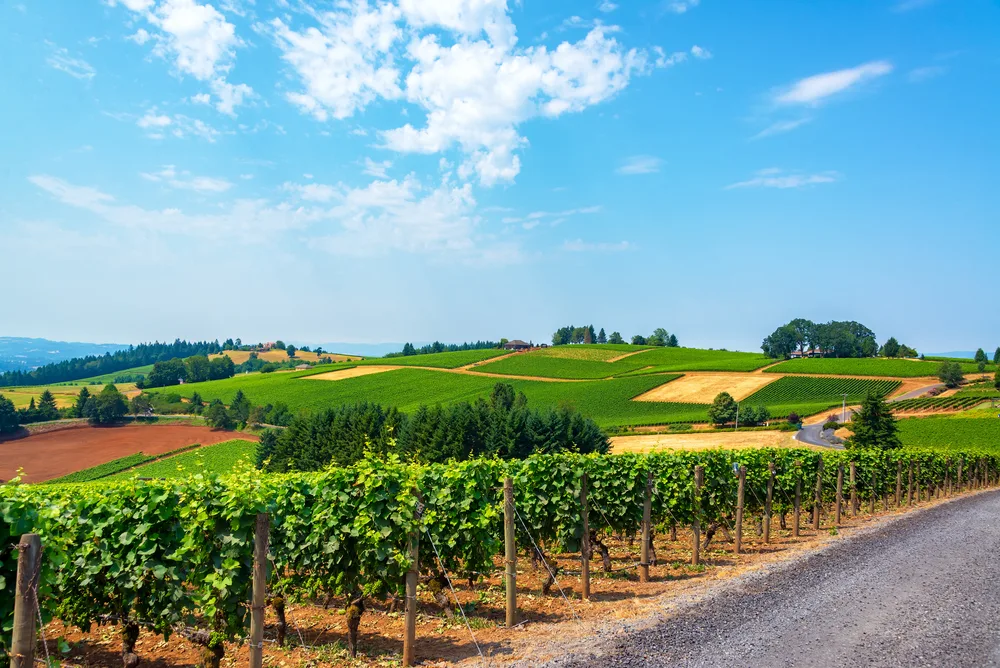
Jess Kraft/Shutterstock
The worst time to visit Willamette Valley in summer (July or August). It’s arguably the busiest season — there’s a plethora of cyclists on the road, so you need to be careful while driving. Lodging also costs more than usual, and guests often need to call ahead to book wine-tasting room hours.
Lastly, weekend crowds just make things more stressful. Still, the sunny days and warmer temperatures draw travelers to the Willamette Valley in summer like a moth to a flame.
It’s truly a bustling time of the year. Wineries also extend their work hours to accommodate as many guests as they can. On top of that, many offer attractive evening events.
Food trucks appear out of nowhere, runners plan races from one winery to another, and there’s a general feeling in the air that everyone’s having fun. In July, the temperatures fluctuate between 82.5°F and 56.6°F.
August visitors should expect temperatures in the range of 83.5°F and 57.8°F. Both months see lower humidity compared to the winter months. Gentle rain may surprise you in summer, but this is rare.
Things to Consider
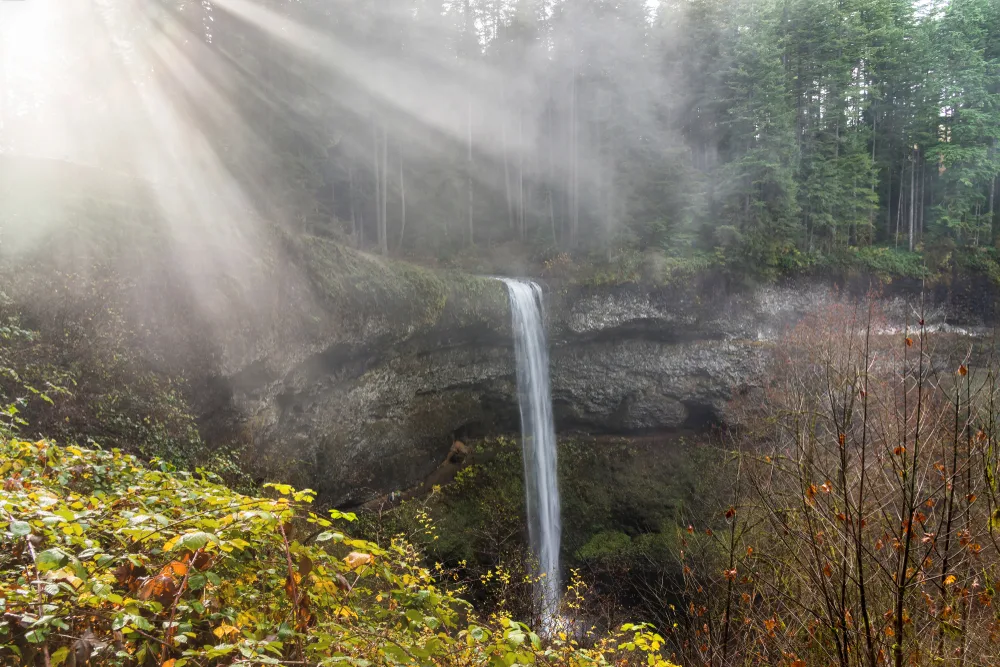
Michael Warwick/Shutterstock
To make sure your Willamette Valley trip goes according to plan, take note of the following tips:
- When you visit specific locations, check for any relevant rules you should follow. For instance, if you go to Schreiner’s Iris Gardens, you’re not allowed to bring drones, and dogs should be on a leash.
- Unless you’re visiting Willamette Valley during its Cellar season, brace yourself for an influx of seasonal allergies. Oregon’s pollen and grass have been known to cause issues even for people with very mild allergies, so pack appropriate allergy medication.
- Wineries are usually crowded during weekends, so if your itinerary schedule allows, visit mid-week.
- While Willamette’s Valley is world-famous for its Pinot Noir grape, don’t be afraid to try different grape varieties and expand your wine horizons. You might just be pleasantly surprised.
So, What’s the Best Time to Visit Willamette Valley?
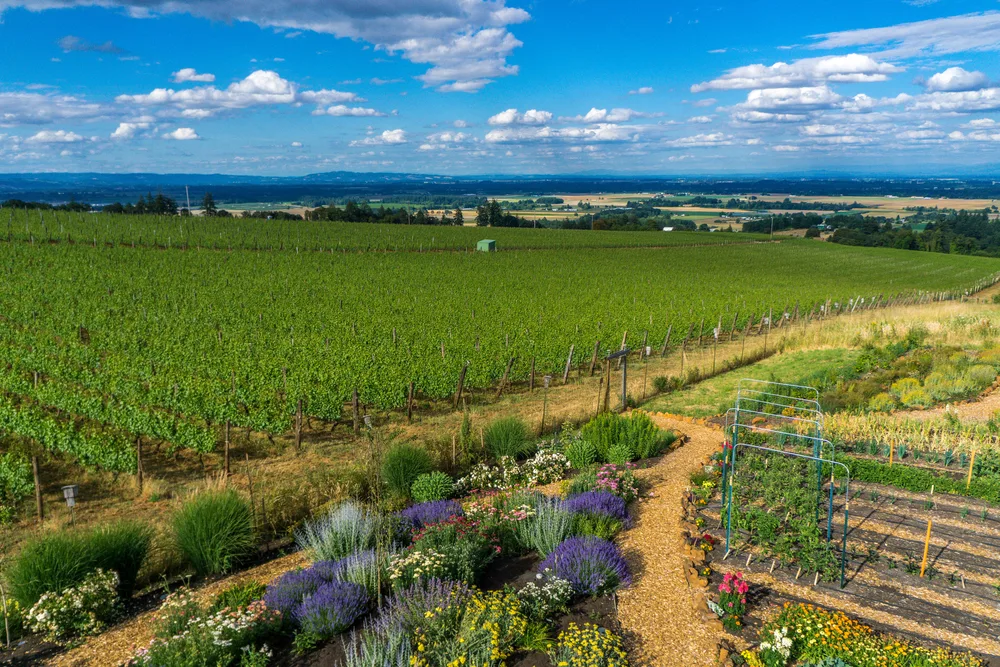
Pernelle Voyage/Shutterstock
Heading to the Willamette Valley at the best time of the year is key to ensuring the perfect stay in this wine utopia. The prime time to plan your trip is anytime during the Willamette in Bloom period (or the April–June period).
The air is fresh, the flowers are in bloom, and the vines give birth to new leaves. There are many ways to experience the spring buzz while there — we suggest starting with a wine tour! Note that crowds are larger at this time of the year, though.
All in all, whether you’re traveling to the Willamette Valley to try out cool wine, enjoy an urban happy hour vibe, or observe the fantastic valley views, you’re bound to have an amazing time!



